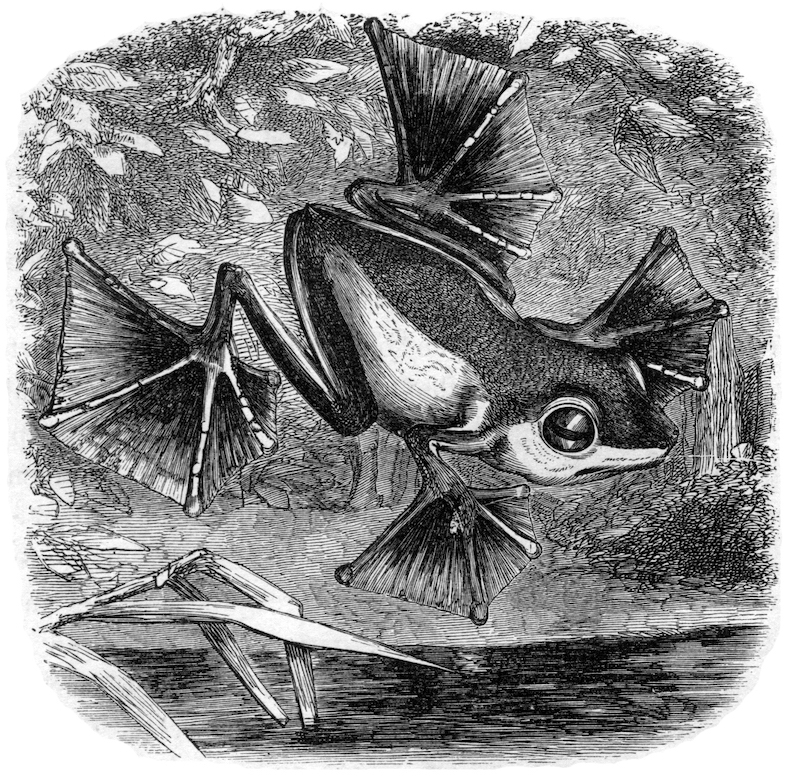The Leapers of the Year
More than 3,400 species of frogs have evolved great aerodynamic abilities that allow them to achieve gliding flight. Flying frogs, also called gliding frogs, come in three main families. The New World and Old World frogs have evolved their capabilities independently.
New World tree frogs seem to prefer gliding at night as this allows them to avoid being blown away by wind.
This species is Rhacophorus nigropalmatus - Wallace's flying frog or the Abah River flying frog. It is one of the first described flying frogs.
Have a look at its huge fingers and toes. Thanks to its big webbed limbs, the frog can jump and glide through the air. Some say it has evolved this ability to escape predators. Living on the ground was not safe enough, so the frog found a better place to live - high in the trees.
However, to lay eggs and mate, this parachute frog has to descend; or, when it feels threatened, it has to move from branch to branch. Yeah, easy, you might say - but no! The frog can to glide to a distance of about 15 m (50 ft) or more! And thanks to its enlarged toe-pads, the frog is able to land softly. In general, maneuverability rather than flying distance seems to be important in the evolution of flying frog morphology.
Their population is considered decreasing although they are listead as least concern by the IUCN. These frogs use wallowing holes of the Sumatran rhinoceros as nesting ground. This rhino is nearly extinct with less than 200 individuals left in the wild! The loss of these wonderful animals would seriously affect the existence of Wallace's flying frogs, too.
Frog Friday: The Wallace's flying frog (Rhacophorus nigropalmatus) has webbed feet that allow it to glide among the jungles of Malaysia and Borneo. #scitwriteURI #anurans pic.twitter.com/FoCHg49TOg
— Noah Hallisey (@NewtNoah) November 16, 2019
I suggest reading Darren Naish's blog article on Scientif American if you want to learn more about flying frogs.

Illustration by J. G. Keulemans
from The Malay Archipelago
| Common name: | Abah River flying frog |
| Scientific name: | Rhacophorus nigropalmatus |
| Phylum: | Chordata |
| Class: | Amphibia |
| Order: | Anura |
| Family: | Rhacophoridae |
| IUCN status: | Least concern |
| Population trend: | Decreasing |
| Scientific reading: |